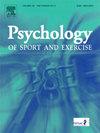人工智能会解决运动员发展之谜吗?对人工智能如何用于运动员识别、选择和发展的批判性回顾。
IF 3.3
2区 心理学
Q2 HOSPITALITY, LEISURE, SPORT & TOURISM
引用次数: 0
摘要
简介:在过去的十年中,机器学习和深度学习等人工智能(AI)方法在体育科学中的应用迅速增加。然而,尽管对这一领域的兴趣越来越大,但这些方法的范围和效用以及与之相关的挑战相对未知。方法:这篇批判性综述旨在扫描运动科学研究中在运动员发展背景下使用人工智能的文章(即人才/运动员识别、人才/运动员选择和人才/运动员发展)。通过数据库、外部参考文献列表、图书章节和其他相关资源检索,从符合条件的文章中提取信息,形成当前综述的基础。关键要点:人工智能的应用主要体现在三个方面:改善运动员评估、运动员选择和分类、运动员发展和训练。这些技术已经以各种方式被使用,并且似乎对该领域的工作人员具有潜在的价值。还讨论了与这些方法相关的挑战。结论:在运动员发展的背景下,人工智能允许比以往更容易地访问更多数据,并且具有更大的统计复杂性。重要的是,一个包含创新和批判性评估的平衡方法似乎是必要的,以确保这些工具增强而不是破坏运动员的识别、选择和发展前景。本文章由计算机程序翻译,如有差异,请以英文原文为准。
Will artificial intelligence solve the riddle of athlete development? A critical review of how AI is being used for athlete identification, selection, and development
Introduction
The last decade has seen a rapid increase in the use of artificial intelligence (AI) approaches such as machine learning and deep learning in the sport sciences. However, despite the increased interest in this area, the scope and utility of, and challenges associated with, these approaches are relatively unknown.
Methods
This critical review aimed to scan sport science research for articles using AI in athlete development contexts (i.e., talent/athlete identification, talent/athlete selection, and talent/athlete development). Through database, external reference lists, book chapters, and other relevant resource searching, information from eligible articles was extracted and form the basis of the current review.
Key takeaways
The use of AI was prominent in three main areas: improving athlete assessment, athlete selection and classification, and athlete development and training. These technologies have been used in a variety of ways and appear to have potential value for those working in this area. The challenges associated with these approaches are also discussed.
Conclusion
AI in the context of athlete development allows for access to more data, more easily, and with greater statistical complexity, than ever before. Importantly, a balanced approach that embraces both innovation and critical evaluation seems necessary to ensure these tools enhance, rather than disrupt, the athlete identification, selection, and development landscape.
求助全文
通过发布文献求助,成功后即可免费获取论文全文。
去求助
来源期刊
CiteScore
6.40
自引率
5.90%
发文量
172
审稿时长
69 days
期刊介绍:
Psychology of Sport and Exercise is an international forum for scholarly reports in the psychology of sport and exercise, broadly defined. The journal is open to the use of diverse methodological approaches. Manuscripts that will be considered for publication will present results from high quality empirical research, systematic reviews, meta-analyses, commentaries concerning already published PSE papers or topics of general interest for PSE readers, protocol papers for trials, and reports of professional practice (which will need to demonstrate academic rigour and go beyond mere description). The CONSORT guidelines consort-statement need to be followed for protocol papers for trials; authors should present a flow diagramme and attach with their cover letter the CONSORT checklist. For meta-analysis, the PRISMA prisma-statement guidelines should be followed; authors should present a flow diagramme and attach with their cover letter the PRISMA checklist. For systematic reviews it is recommended that the PRISMA guidelines are followed, although it is not compulsory. Authors interested in submitting replications of published studies need to contact the Editors-in-Chief before they start their replication. We are not interested in manuscripts that aim to test the psychometric properties of an existing scale from English to another language, unless new validation methods are used which address previously unanswered research questions.

 求助内容:
求助内容: 应助结果提醒方式:
应助结果提醒方式:


